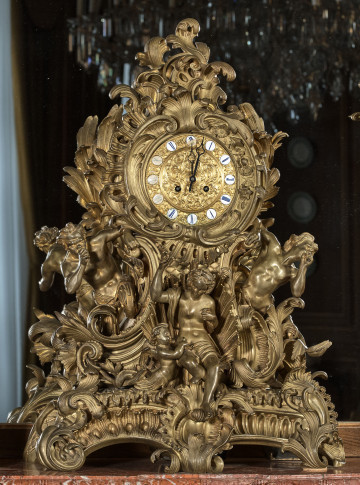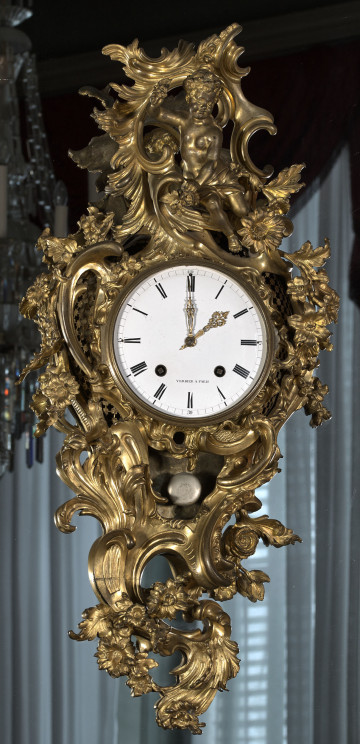
Birth of Venus
18th century
Castle Museum in Łańcut
Part of the collection: Zegary
Rectangular mantel clock with an alarm. At the top, it was finished with a bent single-plane roof with semicircular lines and a ring-shaped handle, supported on four legs mirroring the roof's lines. The front wall was decorated with an engraved floral ornament, while the side walls are fitted with glass. The clock's dial, too, is engraved with Roman numerals for the hours and Arabic ones on the outer band, indicating minutes. In the centre is the dial of the alarm clock with engraved Arabic numerals indicating hours. The idea of a clock signalling the desired hour (usually with sound) originates in antiquity. According to legend, the creator of the first alarm clock was the Greek philosopher Plato. This alarm clock was a water clock with a whistle, through which, at a set time, the air was pushed from an inner tank. Since the end of the 18th century, the demand for alarm clocks as 'timekeepers' grew, which was related to the development of industry, communication, and technological processes. Time became increasingly valuable. The development of industrial production of alarm clocks in the 19th century took place mainly in Germany and France, but by the end of the century already, virtually every country in Europe had its own manufacturers.
Dimensions
height: 16.5 cm, width: 9.2 cm
Object type
clocks
Technique
watchmaking
Material
brass
Creation time / dating
Creation / finding place
Owner
Castle Museum in Łańcut
Identification number
Location / status

18th century
Castle Museum in Łańcut

19th (?) century
Castle Museum in Łańcut

1885
Castle Museum in Łańcut
DISCOVER this TOPIC
National Museum in Szczecin
DISCOVER this PATH
Educational path